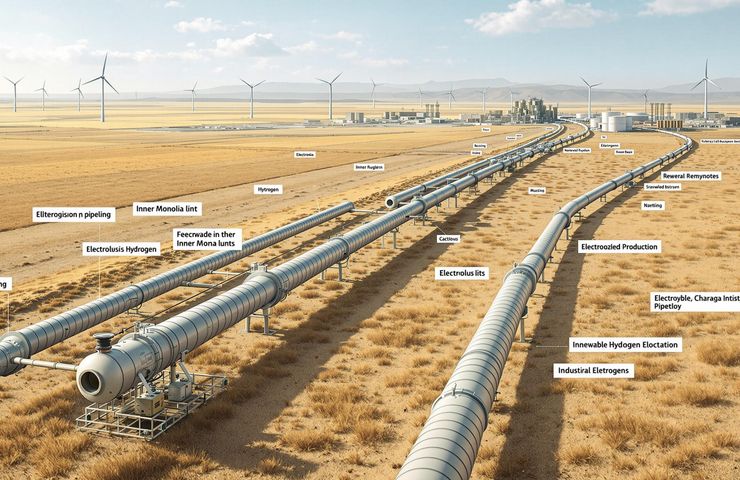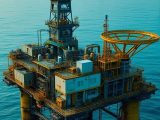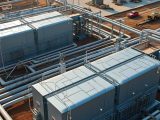
Sinopec Launches China’s First Interprovincial Green Hydrogen Pipeline from Inner Mongolia to Beijing
July 31, 2025Sinopec is making bold moves toward a cleaner future with the groundbreaking launch of China’s first long-distance green hydrogen pipeline. The project has officially kicked off in Ulanqab, Inner Mongolia, with the green light from the Inner Mongolia Energy Bureau. Once it’s up and running, this ambitious pipeline will move up to 100,000 tonnes of green hydrogen a year—produced entirely from wind power—over roughly 400 kilometers to Sinopec’s Yanshan petrochemical complex in Beijing. It’s a major step forward for large-scale hydrogen infrastructure and for China’s broader push toward industrial decarbonization.
The pipeline is slated for completion by July 10, 2025, and directly supports national efforts to scale up electrolysis-based hydrogen production while making better use of abundant but often underutilized renewable energy, especially from regions like Inner Mongolia.
Key Takeaways
- China’s very first long-haul green hydrogen pipeline aimed at serving heavy industrial needs.
- Initial capacity of 100,000 tonnes per year, with room to expand to 500,000 tonnes down the road.
- Led by Sinopec, the country’s top hydrogen producer.
- Serves as a strategic link between energy-rich Inner Mongolia and energy-hungry regions like Beijing-Tianjin-Hebei.
- Backed as a key part of China’s national plans to build integrated hydrogen economies through demonstration initiatives.
A Closer Look at the Tech
At the heart of the project is a 1 GW wind-powered electrolysis plant based in Ulanqab. Here, massive wind turbines generate clean electricity, which powers electrolyzers that split water into hydrogen and oxygen. The resulting green hydrogen is compressed and fed into the pipeline, which snakes its way to Beijing. Once there, it’ll be used in refining, chemical processing, and other energy-intensive operations at the Yanshan complex.
What sets this project apart is its inland, cross-province layout—unlike the coastal, fossil-based hydrogen networks we’ve mostly seen in China so far. It’s paving the way for a new generation of backbone hydrogen infrastructure.
Why It Matters
- Helps tackle the ongoing issue of renewable energy waste—especially in regions where wind and solar power are abundant but hard to dispatch.
- Offers a more cost-efficient way to transport hydrogen compared to trucking or blending it with natural gas.
- Gives a much-needed boost to China’s clean hydrogen economy and cuts emissions from industrial zones around Beijing.
- Could ignite future investments in related areas—like hydrogen-powered transport, ammonia production, and scalable hydrogen storage.
Market and Policy Context
This pipeline is part of a bigger national game plan. Inner Mongolia, for instance, recently rolled out a master plan for a regional pipeline network that revolves around a “one line, two loops, four outlets” framework—this project is that critical “main line.” It’s also a perfect match with national-level goals set by the National Development and Reform Commission, which is doubling down on hydrogen co-firing and other clean hydrogen strategies.
Still, the economics of the whole thing hinge on one key factor: usage. If hydrogen demand doesn’t match throughput—or if pricing policies lag behind—the math may not work out in the short term. But with growing regulatory momentum and industrial buy-in, there’s strong potential to tip the scales.
Zooming Out
This isn’t just another pipeline—it’s a sign that China’s clean energy ambitions are shifting from pilots to big-league execution. By tying together inland renewable energy hubs with end-use industrial centers, Sinopec is laying the foundation for a more connected, sustainable energy grid. It’s a reimagining of how we move power across regions—and one that could influence global energy trends.
Final Thoughts
At its core, this is about a lot more than moving hydrogen—it’s about pushing clean tech from concept to reality. If projects like this prove successful, they’ll set the stage for massive advances in industrial decarbonization, broader hydrogen infrastructure, and a whole new chapter in the global energy story.
About Sinopec
Sinopec, officially known as China Petroleum & Chemical Corporation, was founded in 2000 and has grown to become China’s largest energy company. Leading the charge in hydrogen production, the company has in recent years pivoted hard toward sustainability, launching a wave of clean hydrogen initiatives aligned with China’s national zero-carbon objectives.



 With over 15 years of reporting hydrogen news, we are your premier source for the latest updates and insights in hydrogen and renewable energy.
With over 15 years of reporting hydrogen news, we are your premier source for the latest updates and insights in hydrogen and renewable energy.